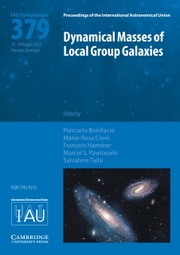No CrossRef data available.
Article contents
How do we design data sets for Machine Learning astronomy?
Published online by Cambridge University Press: 01 August 2025
Abstract
Many problems in astronomy and physics lend themselves to solutions from machine learning methods for the detection and classification of astronomical signals, and model inference from those signals. The historic presentation of machine learning methods as ‘black boxes’ has generated push back from some in the the physics/astronomy communities regarding how useful they are to truly uncover the physical laws that govern our world. Skepticism about the applicability of new computational methods in scientific inference is not new; we highlight connections between the machine learning contexts and previous computational paradigm shifts in astronomy. Moreover, several advances in methodologies challenge the assumption that machine learning ‘gives us answers that we can use but do not understand’ to standing physics questions. We summarize some astronomical machine learning data challenges used in astronomy and how we can use challenges on different scales to test different parts/use cases of our analysis methods.
Information
- Type
- Contributed Paper
- Information
- Proceedings of the International Astronomical Union , Volume 19 , Symposium S368: Machine Learning in Astronomy: Possibilities and Pitfalls , August 2023 , pp. 11 - 27
- Creative Commons
- This is an Open Access article, distributed under the terms of the Creative Commons Attribution licence (https://creativecommons.org/licenses/by/4.0/), which permits unrestricted re-use, distribution and reproduction, provided the original article is properly cited.
- Copyright
- © The Author(s), 2025. Published by Cambridge University Press on behalf of International Astronomical Union


